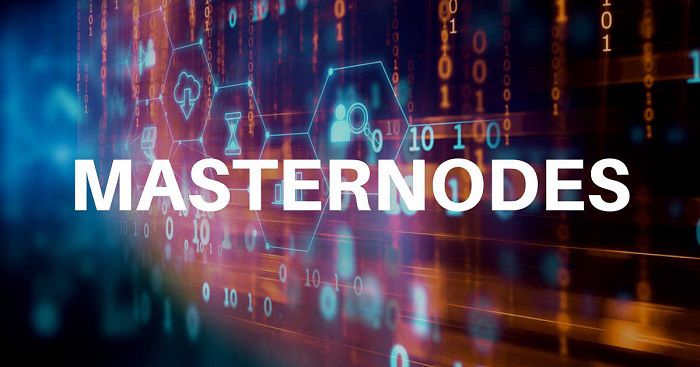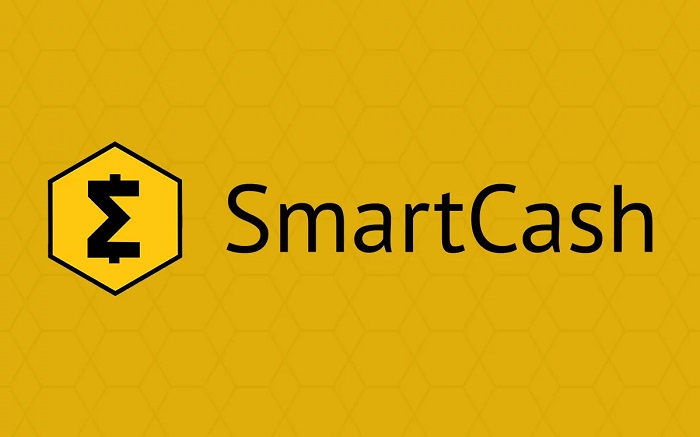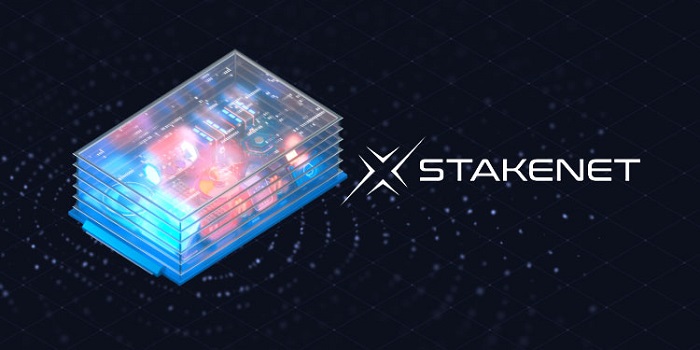If you want to invest in cryptocurrency for passive income, there are other ways besides applying for a saving or lending account. One of them is Masternodes.
Making money in cryptocurrency is not restricted to trading, mining, or investing. Another means of earning money from crypto is running or owning a masternode and this article will be examining the best masternodes to make passive income from. But before that, there are some crucial points that need to be addressed.

Contents
What is a Masternode in Crypto?
For every blockchain or cryptocurrency, it is advantageous to store several blockchain copies on multiple computers. This helps to maintain network decentralization while also increasing the security of that particular blockchain. Computers with a copy of the downloaded blockchain are referred to as nodes. However, among these computers, there are those with additional capabilities, and such are known as masternodes. The ultimate goal of a masternode is to repel the blocks that are harmful or are not in adherence to security protocols.
The importance of masternodes is exemplified when hackers are trying to launch an attack on a specific blockchain. For the attack to be successful, the hacker will require multiple masternodes and it is quite expensive to acquire such. Also, since the aim of the masternodes is to reject harmful blocks or blocks that are against security protocols, the hacker will have to convince other masternodes that their activity is not a fraudulent one. That is virtually impossible to accomplish because masternodes execute confirmation of blocks from various countries. They acquire the necessary information about a block and when it becomes clear that the block has met the required security protocols, that is when they vote to register the block in the blockchain.
Masternodes are essentially in charge of data authenticity as well as the safety of their owners' funds. The more masternodes a network has, the safer that network is. The owners of masternodes are entitled to higher rewards than those of normal nodes due to the higher capacity of masternodes.
In addition to rewards, masternodes provide their owners with income from coins which can be referred to as income dividends. The crypto paid as dividends to the masternode owners can be used just like any cryptocurrency: sold or held in the hope that the value will increase with time. Another option masternode owners have is to invest in an additional masternode device so that they can have access to more income in the future.
Differences between Mining and Masternode
The most apparent difference is that for mining, machines are required such as GPU or ASIC. This means that the individual needs to invest a certain amount of capital to buy these machines and then sell them when they want to get out of mining. On the other hand, masternodes only require purchasing the coin which can then be sold at the owner's discretion at any time on any exchange with ease.
Furthermore, masternodes enable investors to be more liquid while also being able to get in and out faster. With masternodes, investors only have to keep their PC open or use a VPS which does not consume too much energy, unlike mining which consumes a lot of electricity. Considering that we are in a world that is trying to be more green, mining takes away from that and has long been faulted for being an inefficient method.
Pros and Cons of a Masternode
The benefits of owning a masternode are clear:
- It is more ecologically friendly to run a masternode than to go into mining.
- Owners do not need to purchase costly mining equipment.
- Owners are rewarded for participating in the network to ensure its security and decentralization.
- Masternodes are functional on both Proof of Stake (PoS) and Proof of Work (PoW) networks.
However, there are downsides to owning a masternode. Since most of the connection is with the masternode ROI, it might not be profitable to run a masternode in the network of a cheap coin. Also, the profit from a masternode is directly dependent on the volume of transactions in the network. Therefore, for a masternode owner to be profitable, the network and platforms where the coins are being traded should not have liquidity issues. Finally, it is difficult to accurately predict the profit from a masternode due to the highly volatile nature of cryptocurrency prices.
See also: Bitcoin Price Today
What to Consider in a Masternode Coin
When trying to a masternode coin for investment, the first thing to check is if the coin price is growing. Another thing to note is if the coin is traded on platforms with the necessary level of liquidity. Preferably, the coin you should be rising in popularity because a combination of all these factors will affect the ROI of your masternode.
Investing in Masternodes
A quick example will illustrate how the potential income from a masternode can be calculated. In this example, we will be using a network that supports masternodes such as the Dash Network. To run a masternode here, the minimum required capital is 1,000 DASH coins.
When the DASH network was launched initially, one coin was equivalent to one U.S dollar which meant that to run a masternode, an individual would need to invest a thousand U.S dollars (and yes, a specific amount of coins is required to run a masternode). Now that one DASH coin is equivalent to over $100, those who had earlier invested in running masternodes in the DASH network have made significant earnings.
However, the increase in value of the DASH coins means that to start running a masternode in the network now will require not a capital of $1,000 but over $100,000 which could be a hefty sum for many people. This is why a lot of people are looking to other coin networks with smaller entry capital requirements.
Considering the circumstances, what are the best masternode coins to invest in?
DASH
This is the first coin to support masternodes and start paying users a specific fee for running and maintaining the network. Among the large variety of masternode coins, DASH is the most popular. As earlier mentioned, the entry capital requirement is over $100,000 at about $180,000 to be more specific. However, the return is up to more than $10,000 per year which is why this masternode is one of the biggest sources of earning passive income when it comes to cryptocurrencies.
PIVX
Protected Instant Verified Transactions, better known as PIVX, is a coin project that started in 2016. While it was originally a fork of DASH, PIVX is considered one of the most secure coins in the privacy genre of cryptocurrency since major changes were applied to its core. Furthermore, PIVX also uses the Proof-of-Stake consensus protocol allowing it to be one of the most eco-friendly privacy coins in the world.

DefiChain
This has been in existence for just over a year but it has quickly garnered attention due to its masternode value of almost $50,000, a yearly return of $38,000, a volume of over $2.5 million, and a market cap of more than $1.2 billion. The combination of these features allowed it to make big waves in the world of masternodes when it was first launched. Even though the high return looked too good to be true, it proved to be decent and sustainable over time which ensured the growth of the coin price.
See also: Cryptocurrency Top Gainers
SmartCash
SmartCash, also known as SMART, is a decentralized economic system with one goal: to ensure that its community gains the utmost benefit from the project. It is a network that requires just a little amount of capital to invest in its masternodes. The capital requirement is $500 with a yearly return of $100 which makes it quite popular and well-liked.

SmartCash has been around for three years and the price has not diminished while also having a sizeable ROI. Apart from the fact that it is suitable for people looking for a cheap entry into the masternode world, it is also preferable for investors who like good returns and are capable of investing in multiple masternodes simultaneously.
Firo
It was formerly known as Zcoin. The basis of the ZCoin project is zero-knowledge proof as it is a coin that is focused on privacy. This means that users can send and receive coins without any disclosure of information about the transaction, not even information about which coins are theirs. This is possible by utilizing masternode technology for security which makes it easy for traders to successfully hide the transactions being conducted in and out of their wallets.
The cost of entry to invest in its masternodes is just over $7,000 with a yearly return of $950 in passive income. This income is also kept hidden from unwanted eyes, making the network essentially thrives on a secure level of anonymity.
Zenon
This was developed right after the crypto bear crash in 2018, which meant it has never been subjected to a big crash and it also made investors a sizeable amount of profit in 2021. With a price that is not beyond the average rise and fall of crypto prices and a solid nearly 25% return per year, this coin network is a favorite among investors. The capital requirement to own a masternode in Zenon is $52,000, while the yearly return is $12,000 which makes it one of the highest sources of passive income for its size.
Phore
This is one of the oldest projects in the world of masternodes with development starting back in the year 2014. The entry capital required is $800 with a yearly return of $150. This coin network is focused on becoming the masternode coin that ecosystems are built-in just like what Ethereum has done, except this will be for the node part of the crypto world.
Syscoin
This is a platform that is based on blockchain with a focus on the creation of an infrastructure that is needed to draw various types of businesses to the blockchain. One of the most important features of the infrastructure is something known as Blockmarket. The Blockmarket combines the Syscoin market and a wallet that supports the coin. This makes it possible for users to buy and sell coins as well as send encrypted messages.
Stakenet
This is the first currency that began to use TPoS (Trustless Proof of Stake) smart contracts. One significant feature of Stakenet is the Trustless Betting technology within which there is a special shared key used for transactions. This key is made available to the second party for staking. It has been around for years and it is one of the favored coin networks in the community with a yearly return on investment of 14%. With the required capital of just over $2,000, it translates to about $300 yearly return.

It is not the returns that make Stakenet so impressive but rather the feeling of safety and security that it gives investors. Considering the number of coins that have had great masternodes and failed or those that require high entry capital, this coin completely circumvents such issues with its low capital requirement and a solid relationship with its community.
StrongBlock
This is not exactly a coin but instead a token. It is an ERC20 token that can be bought on Uniswap and it needs to be bought and put in a certain wallet such as Metamask. To get started on the masternode of this network, the investor only needs ten of the tokens, and currently, each token costs about $600 which will be $6,000 in total to start. It rewards investors with 0.1 tokens each day which means investors will earn a node every 10 days.
If you're a beginner and intend to limit your starting capital, you can just focus on the cheapest masternode cryptos. Some of them are discussed in this article.

 Dedicated FREE FOREX VPS
Dedicated FREE FOREX VPS Free FOREX Virtual Private Server
Free FOREX Virtual Private Server MT4 Demo Contest, Get $500
MT4 Demo Contest, Get $500 Sign Up for an Account, Claim 60% Deposit Bonus
Sign Up for an Account, Claim 60% Deposit Bonus Free MT4/MT5 VPS 2024
Free MT4/MT5 VPS 2024 Send E-mail and Get Free Merchandise
Send E-mail and Get Free Merchandise $1K Refer a Friend Bonus for Pepperstone Pro clients
$1K Refer a Friend Bonus for Pepperstone Pro clients Maximize Your Earnings with 100% Deposit bonus
Maximize Your Earnings with 100% Deposit bonus Trade to Win, $5,000 Monthly Demo Contest
Trade to Win, $5,000 Monthly Demo Contest Claim 30% + 15% Deposit Bonus from LiteFinance
Claim 30% + 15% Deposit Bonus from LiteFinance











